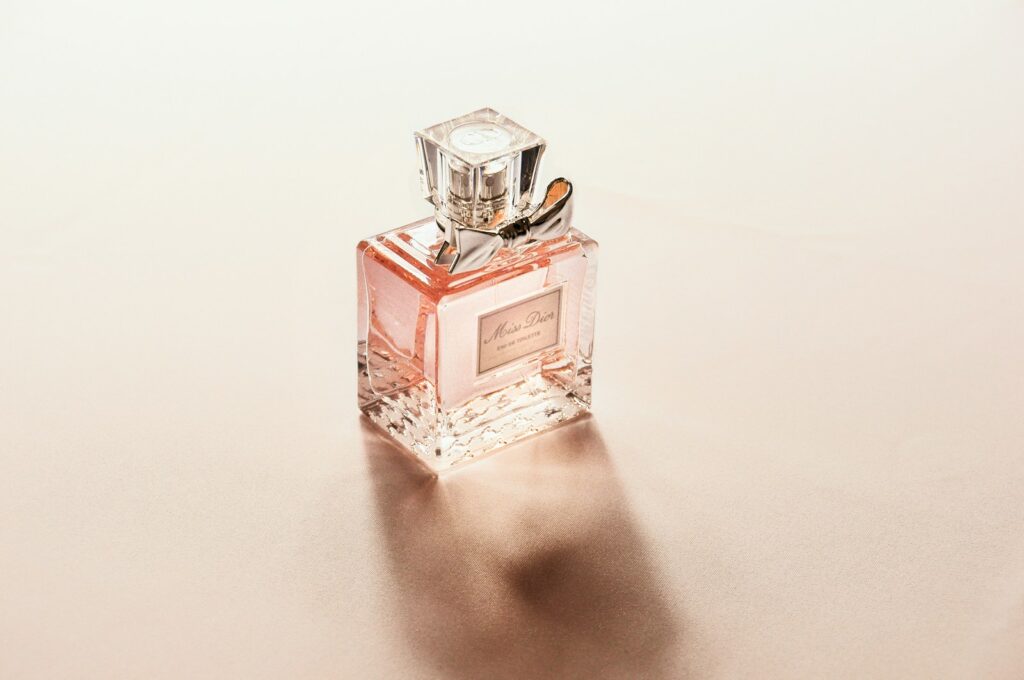Choosing Ideal Fragrant Base
Finding the ideal perfume base is a crucial step in creating a captivating fragrance. As a fragrance expert, I’ve seen how the right base can transform a good scent into an extraordinary one. The perfume base forms the foundation of any fragrance, providing depth, longevity, and character.
When we talk about perfume bases, we’re referring to the complex mixture of ingredients that give a fragrance its lasting power and underlying structure. These bases blend essential oils, aroma compounds, and fixatives to create a unique olfactory experience.
The process of selecting a perfume base involves several key considerations:
- Desired fragrance family
- Longevity requirements
- Sillage (scent trail) preferences
- Skin chemistry interactions
- Natural vs. synthetic components
“A well-chosen base is like a canvas for a masterpiece – it sets the stage for olfactory artistry.”
Understanding the role of perfume bases helps both professional perfumers and fragrance enthusiasts make informed choices. Whether you’re crafting a personal scent or developing a commercial fragrance, the base you choose will significantly impact the final product.
In this article, I’ll guide you through the intricate world of perfume bases. We’ll explore their components, evaluate different types, and discuss customization techniques. By the end, you’ll have a solid grasp of how to select the ideal perfume base for your fragrance projects.
Let’s embark on this olfactory journey together, unraveling the secrets behind exceptional fragrances.
Understanding Perfume Bases
Perfume bases are the backbone of any fragrance. They provide structure, depth, and longevity to scents. I find that understanding these bases is crucial for anyone interested in perfumery or simply wanting to make informed fragrance choices.
A perfume base is a carefully crafted blend of ingredients that forms the foundation of a fragrance. It typically includes a mix of fixatives, essential oils, and aroma compounds. These bases determine how a fragrance develops over time and how long it lasts on the skin.
We can categorize perfume bases into three main types:
- Natural bases
- Synthetic bases
- Mixed bases
Natural bases consist entirely of ingredients found in nature, such as essential oils and plant extracts. Synthetic bases use man-made aroma compounds, while mixed bases combine both natural and synthetic elements.
“The perfume base is the invisible architecture that supports the entire fragrance.”
Each type of base has its own strengths:
| Base Type | Strengths |
|---|---|
| Natural | Complexity, depth |
| Synthetic | Consistency, longevity |
| Mixed | Versatility, balance |
The choice of base significantly influences a fragrance’s character. A woody base might lend warmth and depth, while a fresh base could impart lightness and vitality. Understanding these nuances helps in selecting or creating fragrances that align with specific preferences or goals.
Key Components of Perfume Bases
Diving deeper into perfume bases, we find a fascinating array of components working together to create a harmonious whole. Each element plays a specific role in the fragrance’s overall performance and character.
The four main components of perfume bases are:
- Essential oils: These natural extracts from plants provide complex, nuanced scents. They often form the heart of natural bases.
- Aroma compounds: Whether natural or synthetic, these molecules contribute specific scent characteristics. They can range from simple, single-note aromas to complex accords.
- Fixatives: These ingredients slow down the evaporation of more volatile components, extending the fragrance’s longevity. Common fixatives include benzoin, vanilla, and certain synthetic musks.
- Solvents: Usually alcohol-based, solvents help blend all components and allow for easy application of the fragrance.
The interplay between these components creates the unique profile of each perfume base. For example, a base might combine the woody essential oil of sandalwood with synthetic amber notes, fixed by a touch of vanilla and dissolved in a carefully chosen solvent.
“A great perfume base is a symphony where each component plays its part in perfect harmony.”
Understanding these components helps me appreciate the complexity of fragrances. It also aids me in making informed choices when selecting or creating perfumes. The right balance of these elements can result in a base that’s not only pleasing to the nose but also performs well over time.
When evaluating a perfume base, consider how these components interact. A well-crafted base will have a smooth transition between notes and a good balance of natural and synthetic elements, if applicable. The fixatives should provide staying power without overpowering the more delicate notes.

Evaluating Base Notes
When selecting a perfume base, understanding how to evaluate base notes becomes crucial. These notes form the foundation of a fragrance and significantly influence its overall character and performance.
Three key factors to consider when evaluating base notes are:
- Longevity: How long do the base notes last on the skin?
- Sillage: How far does the scent project from the wearer?
- Skin chemistry interaction: How do the notes develop with individual body chemistry?
Longevity is perhaps the most critical factor. A good perfume base should provide a lasting foundation for the fragrance. I find that bases with a mix of natural and synthetic components often offer the best longevity.
Sillage, or the scent trail left by a fragrance, varies greatly among different bases. Some create a subtle, close-to-the-skin effect, while others project more boldly. The choice depends on personal preference and the intended use of the fragrance.
“A truly great perfume base reveals its beauty slowly, like a story unfolding on the skin.”
Skin chemistry can dramatically alter how base notes develop. What smells wonderful on one person might not work as well on another. This is why testing a fragrance on your own skin is so important.
Here’s a quick guide to evaluating base notes:
| Factor | What to Look For |
|---|---|
| Longevity | The scent should last 6-8 hours minimum |
| Sillage | Should match personal preference (subtle to bold) |
| Skin Interaction | Notes should blend well with your natural scent |
Remember, the goal is to find a base that not only smells good initially but continues to evolve beautifully over time.
Natural vs. Synthetic Bases
The debate between natural and synthetic perfume bases is ongoing in the fragrance world. Both have their merits and understanding the pros and cons of each can help in making informed choices.
Natural bases are derived entirely from botanical sources. They offer:
- Complex, nuanced scents
- Potential aromatherapeutic benefits
- Appeal to eco-conscious consumers
However, they also have limitations:
- Inconsistency due to natural variations
- Potential allergens
- Often higher cost
Synthetic bases, on the other hand, are created in labs. They provide:
- Consistency across batches
- Often longer-lasting scents
- More affordable options
But they also have drawbacks:
- Sometimes perceived as less “premium”
- Lack of natural complexity
- Potential sensitivity for some users
In my experience, many modern fragrances combine natural and synthetic bases to leverage the strengths of both. This approach can result in well-rounded, high-performing scents.
“The art of perfumery lies in finding the perfect balance between nature’s gifts and scientific innovation.”
When it comes to sustainability, the picture is complex. While natural bases seem more eco-friendly at first glance, synthetic bases can sometimes be more sustainable. They don’t require extensive land use or potentially harmful harvesting practices.
Here’s a quick comparison:
| Aspect | Natural Bases | Synthetic Bases |
|---|---|---|
| Scent Complexity | High | Moderate |
| Consistency | Variable | High |
| Cost | Often Higher | Often Lower |
| Sustainability | Varies | Generally Better |
Ultimately, the choice between natural and synthetic bases (or a combination) depends on the specific goals of the fragrance project and personal preferences. Both have their place in modern perfumery and understanding their characteristics can lead to more informed and satisfying fragrance choices.
Popular Perfume Base Families
When exploring perfume bases, we encounter several distinct families, each with its unique characteristics. Understanding these families helps in selecting the right base for a specific fragrance profile. Let’s delve into four popular perfume-based families.
- Woody Bases: These bases provide warmth and depth to fragrances. Common ingredients include sandalwood, cedarwood, and patchouli. Woody bases often create a sense of sophistication and grounding in a scent.
- Oriental Bases: Rich and exotic, oriental bases typically feature warm spices, resins, and vanilla. They lend an air of mystery and sensuality to fragrances.
- Floral Bases: As the name suggests, these bases center around flower scents. They can range from light and fresh to deep and heady, depending on the specific floral notes used.
- Fresh Bases: These bases often incorporate citrus, aquatic, or green notes. They create a clean, refreshing feel in fragrances.
“Choosing the right base family is like selecting the perfect foundation for a house – it sets the tone for everything that follows.”
Here’s a quick overview of these base families:
| Base Family | Key Characteristics | Common Notes |
|---|---|---|
| Woody | Warm, deep | Sandalwood, Cedar |
| Oriental | Rich, exotic | Vanilla, Amber |
| Floral | Romantic, diverse | Rose, Jasmine |
| Fresh | Clean, refreshing | Citrus, Marine |
Each family can be combined or modified to create unique scent profiles. For instance, a woody-oriental base might combine the warmth of sandalwood with the richness of vanilla, creating a complex and alluring foundation for a fragrance.

Customizing Your Perfume Base
Customizing a perfume base allows for the creation of truly unique fragrances. This process involves blending different components to achieve a desired scent profile. While it requires some skill and knowledge, customization can be incredibly rewarding.
Key aspects of customizing perfume bases include:
- Blending Techniques: This involves combining different oils and aroma compounds in specific ratios. Start with small batches and keep detailed notes of each blend.
- Balancing Notes: Ensure that top, middle, and base notes work harmoniously. A well-balanced fragrance should evolve smoothly over time.
- Achieving Desired Effects: Consider the emotional or sensory effects you want to evoke. For example, lavender can promote relaxation, while citrus notes can energize.
When customizing, I find it helpful to start with a simple accord – a balanced blend of two or three components. From there, you can build complexity by adding additional notes.
“In perfume creation, precision meets intuition. Trust your nose, but measure carefully.”
Here’s a basic guide to get started:
- Choose a base note (e.g., sandalwood)
- Add a complementary middle note (e.g., rose)
- Top with a lighter note (e.g., bergamot)
- Adjust ratios until you achieve the desired scent
Remember, perfume creation is both an art and a science. It takes practice to develop the skills needed to create well-balanced, appealing fragrances. Don’t be discouraged if your first attempts aren’t perfect – each blend is a learning experience.
Experimentation is key in customization. Try unexpected combinations, but always keep in mind the overall harmony of the scent. With patience and practice, you can create a perfume base that’s uniquely yours.
Sourcing Quality Perfume Bases
Finding high-quality perfume bases is crucial for creating exceptional fragrances. The market offers a wide range of options, but not all bases are created equal. I’ve found that knowing where and how to source quality bases can make a significant difference in the final product.
When sourcing perfume bases, consider these key factors:
- Reputable suppliers: Look for established companies with a track record of providing quality products.
- Quality indicators: Check for purity, concentration, and origin of ingredients.
- Price considerations: While quality often comes at a premium, exorbitant prices don’t always guarantee superior products.
“The best perfume base is like a hidden gem – it may take effort to find, but its value is undeniable in the final creation.”
Here’s a quick guide to help you evaluate potential suppliers:
| Criteria | What to Look For |
|---|---|
| Reputation | Positive reviews, industry recognition |
| Transparency | Clear ingredient lists, sourcing information |
| Sample availability | Option to test before bulk purchase |
| Customer service | Responsive, knowledgeable staff |
I recommend starting with small quantities from different suppliers to compare quality. This approach allows you to assess how each base performs in your fragrances before committing to larger orders.
Don’t hesitate to ask questions about the bases’ composition, origin, and production methods. Reputable suppliers should be willing and able to provide this information.
Remember, the quality of your base will significantly impact the overall quality of your fragrance. Investing time in finding the right supplier can pay off in the long run with superior end products.
Conclusion
Finding the ideal perfume base is a journey that combines science, art, and personal preference. Throughout this exploration, we’ve delved into the complexities of perfume bases, from understanding their components to sourcing quality products.
Key takeaways include:
- Perfume bases form the foundation of any fragrance, providing depth and longevity.
- Different base families (woody, oriental, floral, fresh) offer unique characteristics.
- Natural and synthetic bases each have their strengths and weaknesses.
- Customization allows for the creation of unique, personalized scents.
- Sourcing quality bases is crucial for producing exceptional fragrances.
“The perfect perfume base is like a well-chosen canvas – it enhances and supports the artistry of the final creation.”
As you continue your fragrance journey, remember that practice and experimentation are key. Don’t be afraid to try new combinations or challenge conventional wisdom. The world of perfumery is vast and full of possibilities.
Whether you’re a professional perfumer or an enthusiastic hobbyist, understanding perfume bases will enhance your appreciation and skill in fragrance creation. Keep exploring, keep learning, and most importantly, trust your nose. The ideal perfume base for your next creation might be just around the corner.












